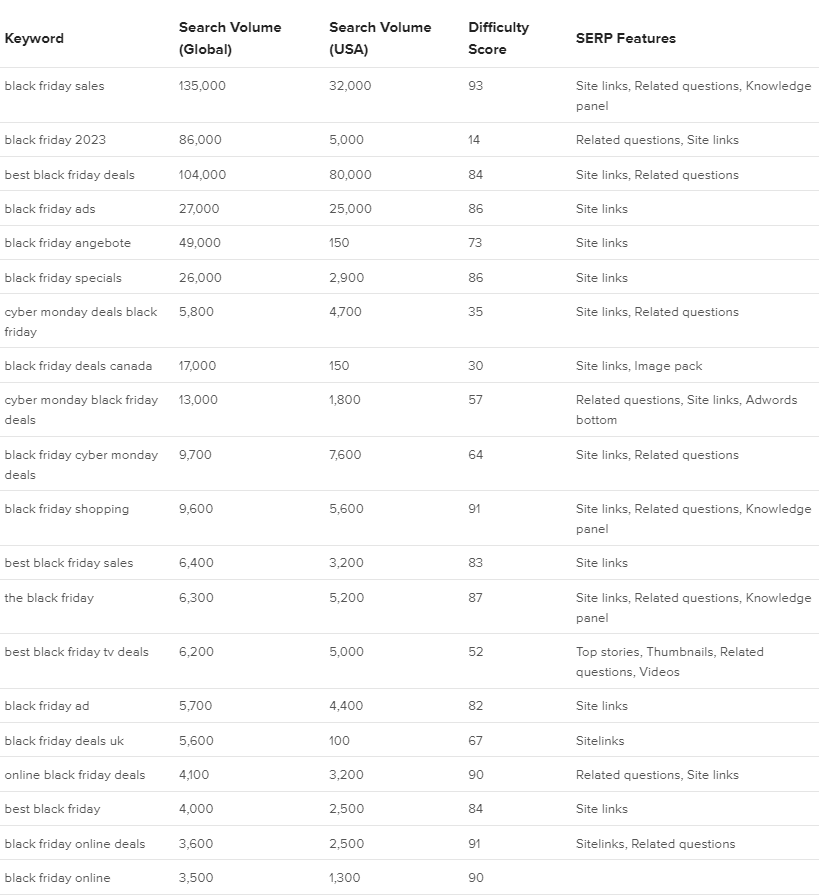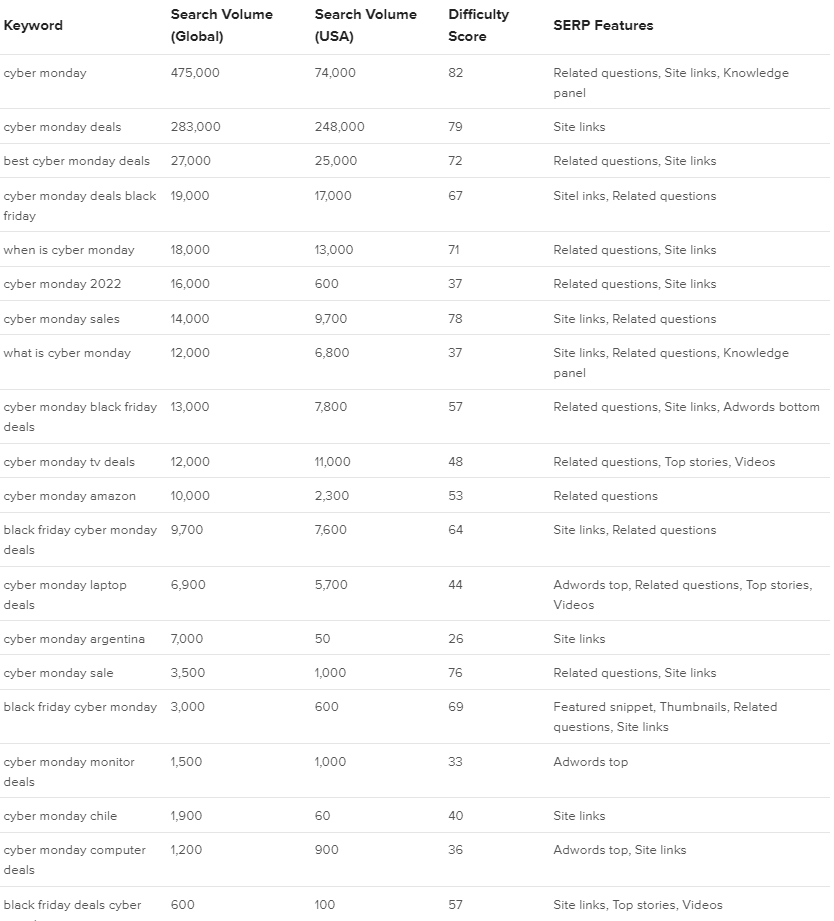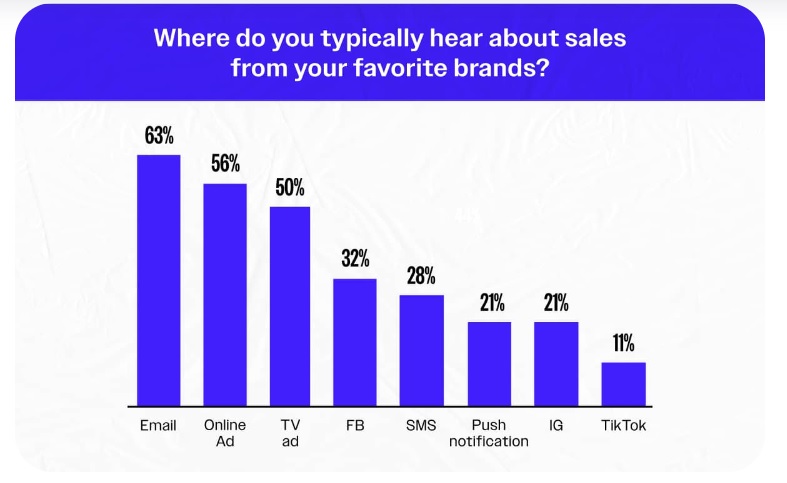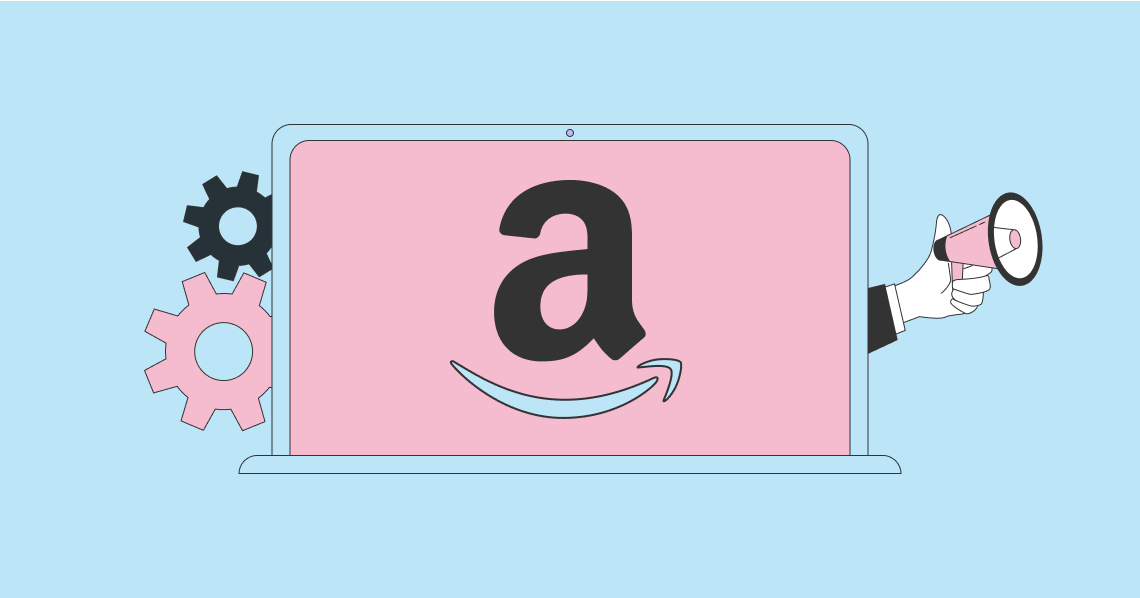Black Friday and Cyber Monday (BFCM) may be a few months away, but as history shows, shopping begins earlier and lasts longer annually. The marketing season can start as early as late summer or right after America's last big shopping day—Amazon Prime Day.
With so many businesses fighting for consumers' attention, how can you ensure your Shopify store will stay aware in the fray? Read on to discover customer expectations, preparation tips, and tactics you can apply to refresh your BFCM marketing strategy.
12-Step Plan to Supercharge Your Black Friday-Cyber Monday Shopify Sales:
- 1. Decide early about inventory.
- 2. Streamline your order and fulfillment workflow.
- 3. Carefully plan deliveries.
- 4. Organize hassle-free returns.
- 5. Create your BFCM promotional strategy.
- 6. Spice up your store.
- 7. Collect email recipients and practice segmentation.
- 8. Activate SMS campaigns.
- 9. Share teasers and deals on social media.
- 10. Partner with influencers.
- 11. Beef up your customer support.
- 12. Analyze your campaign performance.
What to Expect from Customers in BFCM 2023
Bazaarvoice's latest research showed that pre-Christmas shopping began in July, advancing the BFCM marketing crunch time to August and September. Consumers are watching out for the following:
-
Product announcements and purchases via mobile device
73% of last year's BFCM shoppers made purchases on mobile, and this habit is likely to continue. Here are more details on mobile shopping preferences from Tapcart:

Source: tapcart.com
-
Early access to sales
Sellers anticipate a repeat of the 2022 trend wherein 56% of consumers shopped during pre-Thanksgiving sales events, including Amazon’s first Prime Early Access Sale in mid-October. 67% of retailers say shoppers look forward to this year’s discounts. Lower prices similar to last year's "pre-inflation pricing" will drive people to buy early. At that time, 51% of shoppers surveyed by Nielsen said deals were better than in 2021.
-
Buy now, pay later (BNPL) and other payment options
Tapcart expects 31% of consumers to raise their shopping budgets this year. 71% of this percentage plan to spend $100 to $500, while 15% of respondents have budgets over $700. Whether or not part or all of their spending money will go to your store largely depends on your payment methods.

Source: tapcart.com
BNPL is one method to consider, as eCommerce market trackers saw sales transactions increase among 71% of BNPL users who earned over $100,000. Also, Gen Zers prefer paying through their debit cards compared to millennials’ propensity to use credit cards.
-
Extended BFCM deals
Shoppers will look to "limited time" discounts or promotions beyond Cyber Monday, like in 2022. Customer management of BFCM-bought goods will extend to January in light of gift-related returns.
Checklist to Boost BFCM 2023 Conversions on Shopify
With the number of shoppers who prefer to buy in-store (81%) and online (72%) narrowing, you can take measures to lure more people to your e-store until the payment stage, even if they'll eventually pick up their goods at your brick-and-mortar shop. Make your Shopify store BFCM-ready by following the 12 steps below:
1. Decide early about inventory.
Use Shopify Reports and view your Sales by Product report to determine the products to include on BFCM. Also, review your items that sold well in last year's BFCM. Shopify recommends featuring your A-grade items or products behind 80% of your revenue. You can then check how many of your chosen products remain in stock.

Source: reportpundit.com
83% of retailers in an Anvyl survey said they're taking more time with inventory planning amid fluctuations in exchange rates, supply chain disruptions, and trade tensions. 31% of businesses said the cost of goods has risen to 10% this year, while another 30% reported up to 20% in price increases.
Third-party inventory optimization software can help forecast demand to ensure you have enough stock to meet anticipated BFCM demand and avoid excess inventory.
2. Streamline your order and fulfillment workflow.
Consider hiring additional staff to assist as orders tend to surge toward the BFCM week. Ensure your warehouse or fulfillment center has enough stocks of your most popular items for quicker picking and packing. Shopify's Orders Timeline can help you regularly communicate instructions on orders about managing and shipping orders with your team.
You can organize products according to the following:
- Shipping requirements
Prioritize shipments of clients who paid for expedited shipping. You can also group orders by delivery method so that items shipped through a specific courier in a particular area can be done all at once. - Customer priority
You can ship the orders of your most loyal customers early to show your appreciation for their business. Customize tags to identify your most important customers. - Product type
Product packaging depends significantly on its dimensions and weight, so you can organize your items based on these factors for more systematic fulfillment.
3. Carefully plan deliveries.
Create clear expectations about your shipping process. A Voxware poll showed that 65% of shoppers stop shopping with retailers after two to three delayed deliveries.
Diversify your shipping and delivery options. 39% of consumers expect stores to offer "buy online and pick up in-store" (BOPIS), a win-win strategy that can save you on shipping costs and lead to higher foot traffic for your physical store. BOPIS customers typically expect fast service for this option, so prepare your staff's capabilities ahead of the peak season.
Moreover, set up same-day shipping with couriers for purchases over a certain amount. Meanwhile, you can offer free gift-wrapping services for extended shipping times.
4. Organize hassle-free returns.
Shoppers prefer to buy from businesses with free and easy return procedures, which you should feature prominently on your product, shipping, FAQ pages, and order notification emails. In 2022, in-store and online returns were level at 16.5%.
Third-party software can help you handle returns management and automate several actions, including label generation, refunds, product exchanges, pickups, analytics to discover return reasons, most returned products, buyers who return the most, and more.
Shoppers appreciate self-service return systems that skip lengthy phone conversations and back-and-forth emails. Let them exchange their original purchase for anything in your store to give you upsell opportunities. Or offer a store credit instead of a refund so shoppers can get their money back, but you retain the future revenue.
54% of shoppers prefer in-person drop-off at designated locations to mailing returns.
5. Create your BFCM promotional strategy.
Your strategy must start with crafting an irresistible offer or set of recommendations. In choosing the strategy to apply, keep in mind that over half of Gen X and 50% of millennials have decided to start hunting for holiday deals in September and October, according to research by Celigo.
-
Discounts
Offering a deep discount on a popular item can draw internet visitors, who can later pick up other products before heading to your checkout page.
Your discount can also be on the shopper's total cart value (based on a threshold spend, such as 10% off for purchases over $100 or $25 off for orders over $200) or bulk orders. Volume discounts can help you clear your inventory. Meanwhile, giving away a gift can encourage repeat business and increase customer satisfaction because people love freebies.
Be creative with your discounts—while plenty of retailers may offer 20% off, why not announce: "50% discount for first-time buyers" or "30% off when you buy six pairs or more pairs of shoes"?
Other variations include a gift with every purchase, buy-one-get-one-free, or free shipping.
Also, consider offering larger discounts to regular and VIP customers within a specific timeframe.
-
Upsells or cross-sells
Selling product bundles is a simple way to increase your store's average order value. Meanwhile, crafting shopping guides explaining why your items make superb gift sets can motivate customers to shop for loved ones when they visit your store.
-
One deal an hour or flash sales
Stir up that sense of urgency by staging a sale on different products at specific hours. Or run a flash sale that slashes prices by 70% to 90% for a few hours.
6. Spice up your store.
It's time to glam up your Shopify pages by editing your store's look using the Theme Editor to align with the BFCM season.

Source: help.shopify.com
Customize your pages months before November for a smooth transition and sufficient troubleshooting.
-
Homepage
You can use design tools like Canva or Taler to change your hero image or header; otherwise, hire a professional to provide customized visuals for your BFCM-themed homepage.
Include a countdown timer to create urgency, visible CTAs—preferably bold or thick font, and high-converting sales banners. Here are some suggested keywords:

Source: printful.com
Black Friday keywords

Source: printful.com
Cyber Monday keywords
If you're offering free shipping on all orders for specific locations, mention this on all orders.
-
Landing page
You can make several landing pages, one for each: top-performing categories, best-selling sale items, and discount types.
Grab attention with a compelling headline, attractive graphics, short but catchy content, a list of killer discounts, urgency countdown timers, features and benefits, a pressing call to action, and social proof or reviews and testimonials.
You can use landing page builders to improve conversion.
-
Product pages
Review and update your product pages with optimized photos and BFCM widgets that include phrases like "sale ends soon," "sold out soon," "limited time only," "in high demand," or "only one left."
Add product reviews and ratings to your product pages to generate trust among shoppers who rely on public feedback before deciding to buy.
Furthermore, update shipping information to include a sentence or two about possible delays. Also, add question-and-answer pairs related to BFCM purchases on your FAQ page.
-
Site search
Make it easier for shoppers to navigate your store by optimizing your site search, where 69% of internet users start their eCommerce journey. Improve your search function by going to Shopify's storefront filtering.
-
Checkout page
Make your checkout and payment process easy and seamless across devices. Use Shop Pay to allow customers to save their payment info. This way, checkout forms auto-fill themselves the next time they buy from your store.
Shorten your payment form to just seven fields or elements at most to prevent visitors from abandoning their carts. Also, consider permitting unregistered visitors to check out as guests or sign in with their Google account if data collection is your priority.
Buyers are more likely to complete transactions when you offer various payment methods, such as Apple or Google Pay and BNPL.
Finally, reduce your cart abandonment rate through targeted emails and SMS—which you can automate—that will motivate your customers to complete their purchases.
-
Website performance
Test your site for speed by viewing your Shopify store speed report. Also, request feedback regarding navigation, user-friendliness, and mobile-responsiveness. Include the following in your audit:
- Visibility and functionality of website buttons and navigation links
- Updated the number of stocks on product pages
- Image file sizes (Shopify displays images in fast-loading WebP format)
- Accuracy of contact pages
- Privacy and security levels
- Voice search-friendliness (product descriptions must use conversational words so voice assistants like Alexa and Siri can include your items in search results)
Check if your site works well across various browsers (Google, Firefox, and Internet Explorer).
Keep your shoppers scrolling through your web pages by distributing product photos throughout the page instead of crowding them on top. Also, put off asking them to register or requiring them to log in at the start, as this needs data processing and validation.
7. Collect email recipients and practice segmentation.
Email gives brands a chance to hyper-personalize content, driving half of its recipients to purchase products upon receiving a message in their inbox over the past year. Such success has made this channel 108% better than banner or social media ads and organic posts. Tapcart reported that emails were the top source of BFCM deals last year.

Source: tapcart.com
Capture as many email leads as possible this early by creating sign-up pop-ups on your Shopify store's pages. You can also include a QR code that directs recipients to a registration form.
Various brands can fill your target market's inboxes with emails during BFCM. Increase your open rate by personalizing your messages based on the segments where recipients belong. You can segment your mailing list into the following categories:
- Product browsers
- Engaged visitors who haven't purchased yet
- "Almost purchasers"
- Recent email openers
- Seasonal shoppers
- Product category buyers
- Gift givers
- VIP customers
- Email ignorers
- Geographic targets
With Shopify Email and email marketing software, you can automate the customization of subject lines, body text, and offers according to the recommended segments.
For instance, entice email ignorers with free shipping or a gift. Meanwhile, you can offer free shipping plus a gift to the "almost buyers" segment or the consumers who received the email but didn't open it on the sale day. For good measure, test your email automation to ensure messages land in the correct inboxes.
8. Activate SMS campaigns.
This fast and direct marketing method also has a 98% open rate. So, it isn’t surprising that SMS campaigns for BFCM 2022 rose 64.5% year-on-year. Despite a 34% decline in automated sends, SMS-triggered orders rose nearly 1600%.
Use email and social media to promote sign-ups for your SMS notifications. You can also feature an invitation on your checkout page to encourage shoppers to subscribe to your text messages. Be sure to connect your product catalog to your SMS platform so you can collect data. Segment your subscribers according to location, engaged vs. unengaged, and status (VIP or other based on spending, loyalty, and more).
Learn more about their shopping preferences by texting "What's your favorite style?" or "What price range are you looking for?"
9. Share teasers and deals on social media.
45% of consumers' product discovery happens on social media. Use your social channels to drive sales or traffic to your store by:
- Integrating checkout on Facebook and Instagram
- Posting a message, photo, or video on your profile highlighting your BFCM promotion
- Updating your Instagram or Facebook Story about your BFCM deals
- Including a link to your BFCM landing page on your bio
- Featuring BFCM hashtags to expand your reach
- Running ads before November to collect warm leads at a lower cost, focusing on locations (cities and states) where you got the highest sales
10. Partner with influencers.
Reaching out to influencers and informing them about your BFCM sale can expand your existing audience size. 37% of consumers trust them more than they do brands.
You can give them discount codes that customers can use on their purchases. Go for micro-influencers whose followers match your brand personas.
11. Beef up your customer support.
Provide real-time assistance to your visitors and shoppers, particularly first-timers. One way to do this is by adding a live chat feature to your store. Also, consider installing an automated chatbot for handling common FAQs. Or you can create a website pop-up that directly connects shoppers with your sales team.
12. Analyze your campaign performance.
Document your decisions and outcomes to determine the marketing tactics that worked and those that didn't. Shopify Analytics can provide insights on sales. Monitor real-time performance through Live View.

Source: help.shopify.com
The platform also recommends the use of apps measuring your eCommerce conversion rate.
Let Shopify Experts Help You Gear Up for 2023 BFCM
Crafting your marketing strategy for this year's BFCM and pulling everything together may be too much for you or your team to handle alone. Thankfully, eCommerce professionals with Shopify certifications are available for hire to help work out solutions to optimize your e-store for the holidays.


